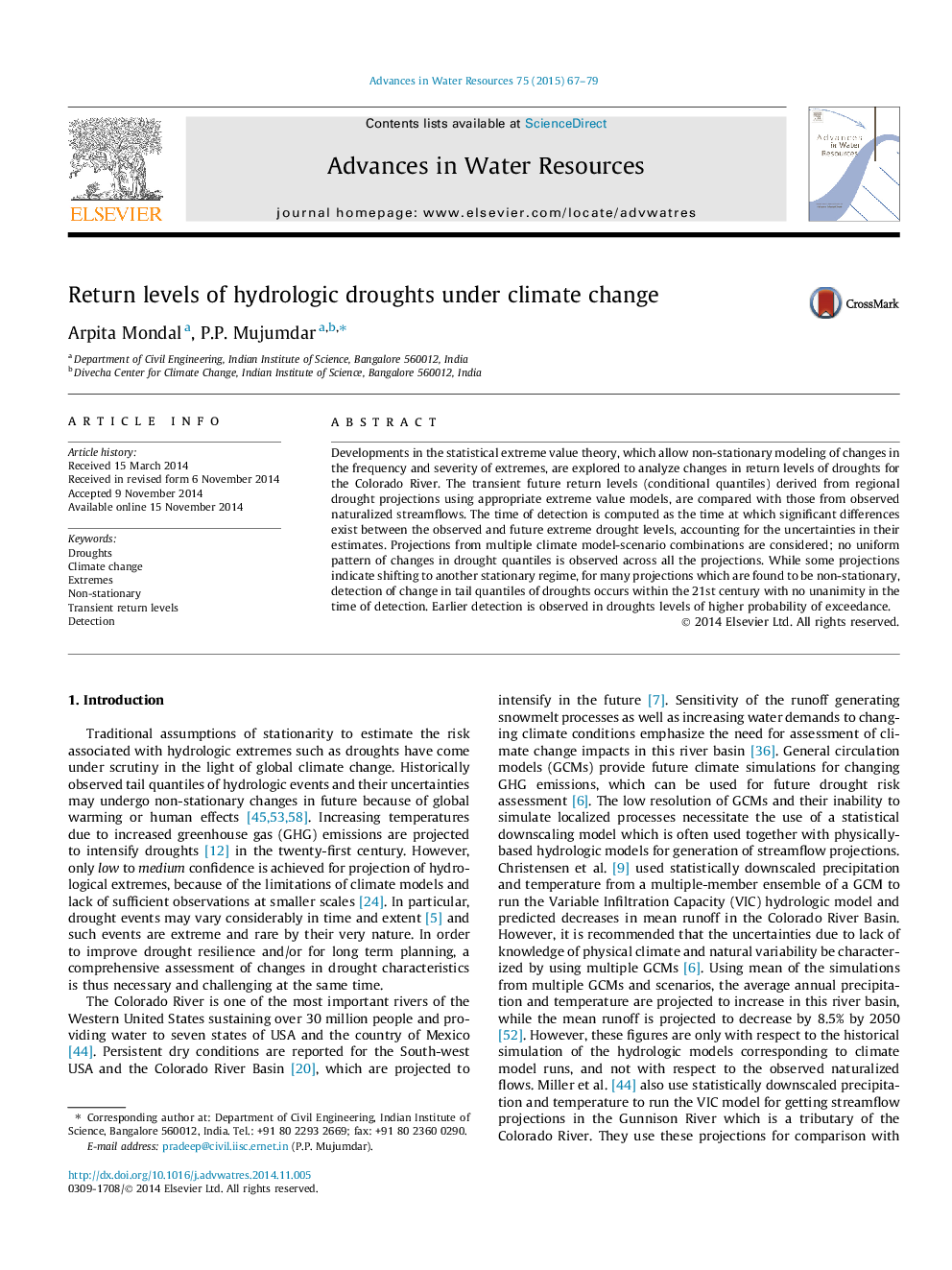| Article ID | Journal | Published Year | Pages | File Type |
|---|---|---|---|---|
| 4525451 | Advances in Water Resources | 2015 | 13 Pages |
•Non-stationary extreme value theory used to detect changes in drought return levels.•Multiple projections and uncertainties in return levels considered for detection.•Several projections found to be non-stationary though observations are stationary.•Detection occurs in future for several projections; no unanimity in time of detection.•Earlier detection in droughts of lower return periods.
Developments in the statistical extreme value theory, which allow non-stationary modeling of changes in the frequency and severity of extremes, are explored to analyze changes in return levels of droughts for the Colorado River. The transient future return levels (conditional quantiles) derived from regional drought projections using appropriate extreme value models, are compared with those from observed naturalized streamflows. The time of detection is computed as the time at which significant differences exist between the observed and future extreme drought levels, accounting for the uncertainties in their estimates. Projections from multiple climate model-scenario combinations are considered; no uniform pattern of changes in drought quantiles is observed across all the projections. While some projections indicate shifting to another stationary regime, for many projections which are found to be non-stationary, detection of change in tail quantiles of droughts occurs within the 21st century with no unanimity in the time of detection. Earlier detection is observed in droughts levels of higher probability of exceedance.
